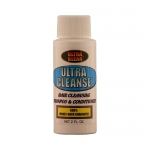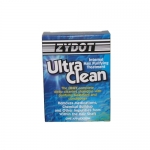Although a hair test is one of the most accurate of all drug tests, its complexity and high cost make it relatively rare. This is good news for users of marijuana and other recreational substances, since this kind of test is considered extremely difficult to cheat. However, reliable method exists, and in this article we will explain you how to pass a hair follicle drug test.
Table of Contents

About Hair Follicle Drug Test
Every time you introduce toxins to your body, the blood carries it around in your veins depositing little bits of the toxins here and there throughout your body. As you can see from the diagram, toxins are deposited into the hair follicle and trapped permanently.

As hair grows slowly, hair drug test do not usually detect use of any drug within the past week and not significantly affected by brief periods of abstinence from drugs!
Using hair test lab can even determine the time when the drug use has started and when it has stopped. The remnants of almost all drugs that are accumulated in the hair shaft lay down in it very tightly and do not move along the shaft, therefore, knowing the speed of hair growth it is possible to track the periods of drug use, in case long enough segment of hair is available. The only exception here is cocaine, whose residues are very easy to detect, but able to move inside the hair shaft, what makes it impossible to determine the time when drug has been used.
Hair follicle drug test shows positive result a little more than twice as often as a urine test. In a recent study, out of 1823 paired hair and urine samples, 57 urine samples tested positive for drugs of abuse; while 124 hair samples from the same group tested positive.
What Drugs It Can Detect
The actual list depends on the kind of test. There is a standard testing panel that detects 5 drugs:
- marijuana
- cocaine
- amphetamines (meth, ecstasy, MDMA)
- opiates (morphine, codeine)
- phencyclidine (PCP)
- methadone
- barbiturates
- benzodiazepines
- oxycontin
- tramadol
- demerol
- propoxyphene
How Soon after Use Can Drugs Show Up in the Hair?
If the hair is taken from the head, any drug can be detected in it after about 5-7 (up to 10) days after it has been consumed. This period is required for the hair affected by the drug to show up above the scalp. Body hair usually grows slower and shows more distant results.
How Far Does a Hair Test Go Back?
Only 1,5 inches (3,8 cm) of the closest to the scalp hair is taken for drug testing. The speed of human hair growth is approximately 0,5 inches (1,3 cm) a month, so it covers the period of about 90 days. However, this timeframe is average and can vary due to individual specifics of hair growth.
As for body hair, it is impossible to define the relatively accurate timeframe. Usually, the test can show only the fact of drug use during approximately last year without determining more specific period.
Can an External Exposure to Drugs Affect Your Result?
No. To make sure that there was not an external contamination, the laboratories look not for drugs themselves, but for their bi-products called metabolites that are produced by the body only after direct consumption of the drug. They cannot be the result of environmental contamination. For example, for marijuana detection, labs test for THC-COOH. The presence of this metabolite shows the difference between external exposure and actual use.
Does Hair Color Affect Results?
No. The hair color depends only on the amount of melanin present in the hair shaft. Numerous experiments proved that it has no substantial effect on the results of hair drug test.
However, in some cases, cosmetic treatment such as bleaching and dying can damage hair, what leads to the loss of drug traces from the hair cortex. This can change the concentration of drugs in the hair according to the degree of damage. The more the hair is damaged the more it will affect the results of drug test.
How to Pass a Hair Drug Test
Some people attempt to circumvent this through shaving their heads, but this isn't a way.
In the absence of the required amount of hair on the scalp, body hair can be used as an acceptable substitute!
So, the only way is to remove toxins from your hair. You can do that by washing your hair with a special cleanser.
We should mention here that there have been some allegations that ANY shampoo will cleanse the hair of toxin traces. Well, that is true, if you use a common shampoo long enough and often enough. We're talking about a lot of hair washes over a fairly long period of time here.... many days, weeks, or months, depending on the drug type and amount of usage. You usually have notice about a hair follicle test within hours, or within just a few days!
In case you are not sure that you will pass the next hair follicle drug test, you can use our Home Hair Test Kit to check yourself. And, getting those toxins out of your system with Total Detox Cleaning Package may help you get over the effects of drug usage much more quickly.




